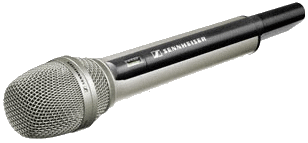Fri, 13 May 2011 09:00 GMT
Europe, the Netherlands ministry of economic affairs has stated that it wants to keep the digital dividend (762-890 MHz) free for mobile Internet and permanently allow the DECT guard band suitable for license free use, such as for microphones and low power networks like pico cells (source: wirelessfederation)
Mon, 13 Dec 2010 10:30 GMT
Europe, WG FM consultation (deadline: 2010/12/21) on 1400-1427MHz EEES (11)/AA, LPRs (11)BB, Radio Microphones (ERC70-03 Annex 10), AMI (ERC70-03 Annex 12) and L-band (ECC Report 161).
WG RA consultation (deadline:2010/12/07) on GSM-R updates in 876-880&921-925MHz(02)09, GSM-R licensing exemption (02)10 and Enforcement Benchmarking.
WG SE consultation (deadline: 2010/11/30) on 5850-7075MHz HAPS co-existance (ECC Report 156), spurious impact on radio services (ECC Report 157), impact of 26GHz SRR-UWB (ECC Report 158), cognitive radio in white spaces 470-790MHz (ECC Report 159), allocation of FWA in 24.5-26.5, 27.5-29.5 & 31.8-33.4MHz (ECC/REC/(11)01) and Unwanted Emissions in the Spurious Domain ECC/REC74-01.
Also refer to ECC draft Report 38 for consultation on ERC70-03.
Sun, 14 Nov 2010 16:00 GMT

Wireless analog (and some digital) microphones in Europe can be marketed using the RF standards EN301357-1 & -2 or EN300422-1 & -2 i.c.w. EMC standard EN301489-1 & -9 and Safety standard EN60065/EN60950-1. Frequency bands opening opportunities are 29.7-47MHz (see ERC 70-03 annex 10a: 10mW), 174-216MHz (10d: 50mW), 470-862 (10e: 50mW), 863-865MHz (10c: 10mW), 1785-1800MHz (10f/g: 20 or 50mW). At present, the 863-865MHz band is generally available throughout the EU. Other frequencies however cannot be used, certainly not in all countries, due to the ongoing process of reassigning the TV bands. All bands require a personal end-user use-license, except 10a/c/g. 10a is also a band for Military use.
In addition to the standards mentioned, we refer to ETSI Technical Specification TS 102 192-1 &-2 for more generic background information of microphones in the 25MHz-3GHz range. For more specific information on professional microphones (PWMS) we advise to read ETSI Technical Report TR 102 546 V1.1.1.
We remark that for digital wireless microphones in the 1785-1800MHz band, the older ETSI standards EN 301 840-1 &-2 exists but these appear not to be used in favor of EN 300 422-1 &-2.
For more information and determination of the correct approach for your microphone, contact Teleconformity.
Fri, 05 Nov 2010 18:00 GMT
Industry Canada CPC-2-1-11 provides a useful overview of Wireless Microphones and Wireless Cameras to be authorized under RSS-123.
Fri, 05 Nov 2010 17:00 GMT
Useful overview published by Radio Reference about frequencies to use for wireless microphones (follow the RSS link).
Find also an article about Corless Microphones in the USA, published by Radio Refernce here. Please not that frequency policies may change over time.
Fri, 05 Nov 2010 16:00 GMT
Sennheiser provides an on-line frequency tool that allows you to search for available frequencies in the USA. The tool has a live interface to the FCC TV broadcast database. You can find the available frequency easily for trouble-free operation of wireless microphones.
Fri, 05 Nov 2010 15:00 GMT

This RSS link refers to a useful article explaining wireless microphones.
At present, analog wireless microphones in the US may/could operate in:
169.445-171.905MHz for secondary use (90.265(b): 50mW B=54kHz).
54-72, 76-88, 174-216MHz (74.861: 50mW); 470-608, 614-698MHz (74.861: 250mW) .
49.82-49.9MHz (15.235); 72-73,74.6-74.8,75.2-76MHz (15.237);
88-108MHz (15.239) and 902-928, 2400-2483.5, 5725-5875MHz (Part 15.249) are an option but not very often considered.
All part 15 devices operating outside the restricted bands (15.205) and outside the TV bands can also be used when authorized according the limits and provisions of 15.209. Any part 15 device capable of transmitting in the TV bands (ch.2-51, excluding ch.37) must be marketed in compliance with all 15.216 alerts. Part 15 devices are Unlicensed and do not require an end-user use-license.
Microphones used in the 700MHz band (Part 74: 698-806MHz) are prohibited by the FCC after 2010/06/12. Devices authorized under Part 74 and 90 require a permanent (or temporarily) end-user use-license to be obtained from the FCC and must be operated at minimum distances from broadcast stations.
Digital auditive devices or microphones can operate under the provisions of 15.247 (902-928, 2400-2483.5, 5725-5850MHz; FHSS Bluetooth or digital modulated) or 15D (1920-1930MHz; DECT based).
Thu, 14 Jan 2010 14:00 GMT
FCC reports 700MHz wireless microphones approved under part 74 may not be used anymore after 2010/6/12.
Wed, 31 Dec 2008 12:00 GMT

Wireless microphones in Japan can be certified and operated in accordance with Ordinance 37, 2 paragraph 1-12 category B (779-805MHz: 0.01W), paragraph 8 category Y (74.58-74.76, 322.025-322.4 and 806.125-809.75MHz: 0.01W). Digital microphones are specified in paragraph 1-12-2 category CU. For more information about mircophones for Japan, contact Teleconformity.